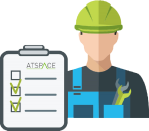Call
+44 345 6465 454
Get a quote


In its basic form, a sound test is a test carried out at a pre-completion stage on all new builds and conversions. To require a test, the property must have either a separating wall or floor with another property. Depending on which element is present, it will require either an Airborne or Impact test. An airborne test is carried out on both walls and floors, and impact on floors. Both methods of testing are measured between habitable rooms (Bedrooms, Living Room, Kitchen, etc.)
The majority of properties that require this test are flats, semi-detached, and terrace houses. Other types can require testing depending on their design or purpose, such as offices, but these are down to the building inspector’s discretion.
Let’s look at this in greater detail.
The purpose of the test is to ensure that a building complies with Building Regulations Approved Document E. It’s put in place to ensure that there is no excessive level of sound travelling from one property to another via separating floors or party walls.
All testing must be carried out using calibrated sound equipment, which usually consists of a sound meter, amplifier, loudspeaker and tapping machine. All our fully trained engineers at ATSPACE carry this equipment, and all engineers carry out the testing in accordance with ISO 140-4 & ISO 140-7. This equipment is calibrated annually or bi-annually, to ensure the readings measured are accurate. As well, the engineer calibrates the meter before and after each test to ensure the meter hasn’t varied from its calibrated state.
So, there are two types of pass rate, the Airborne and the Impact, which we previously outlined. Below are the pass results that must be achieved;
New Build
Airborne – DnTw+Ctr ≥45dB
Impact – LnTw ≤62dB
Conversion
Airborne – DnTw+Ctr ≥43dB
Impact – LnTw ≤64dB
Airborne testing is carried out on party walls and floors/ceilings between properties. The purpose of an airborne test is to measure the sound level transmitted through the air from one dwelling to another. The loudspeaker outputs white noise on one side of the partition, while measurements are taken with a sound meter on the opposite side. This then allows us to calculate how many decibels (dB) are lost through the partition.
This test mimics the effects of people talking, playing music or watching TV.
An impact test is only carried out on floors/ceilings that divide dwellings. This is to measure the amount of noise transmitted directly through an impact to the separating construction. For this, a tapping machine is used, which consists of multiple metal weights continuously tapping the floor to create an impact noise. We then measure how much sound passes through the floor/ceiling using the same sound meter on the other side.
This mimics the sound of people walking around and moving things, such as furniture.
